
The Royal Infirmary of Edinburgh, or RIE, often known as the Edinburgh Royal Infirmary, or ERI, was established in 1729 and is the oldest voluntary hospital in Scotland. The new buildings of 1879 were claimed to be the largest voluntary hospital in the United Kingdom, and later on, the Empire. The hospital moved to a new 900 bed site in 2003 in Little France. It is the site of clinical medicine teaching as well as a teaching hospital for the University of Edinburgh Medical School. In 1960, the first successful kidney transplant performed in the UK was at this hospital. In 1964, the world's first coronary care unit was established at the hospital. It is the only site for liver, pancreas and pancreatic islet cell transplantation and one of two sites for kidney transplantation in Scotland. In 2012, the Emergency Department had 113,000 patient attendances, the highest number in Scotland. It is managed by NHS Lothian.
Bangour General Hospital was a hospital just west of the village of Dechmont, West Lothian, Scotland. It had its origins during the Second World War when hospital bed numbers in Scotland were greatly expanded to deal with the anticipated increase in civilian and military war casualties. The Emergency Hospital Service (Scotland) scheme resulted in seven new hospitals being built, while at Bangour Village Hospital in West Lothian an annexe of five ward blocks was built and this developed into Bangour General Hospital after the war. This hospital served the population of West Lothian as a general hospital and also included a maxillo-facial unit serving the Lothian region and a burns and plastic surgery unit serving much of east Scotland, the Borders and the Highland region. The hospital services were transferred to the newly built St John's Hospital at Livingston during 1989–90, and Bangour General Hospital closed in 1990 and was subsequently demolished.
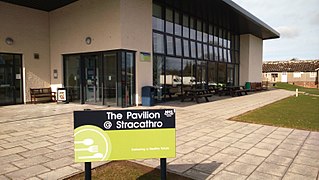
Stracathro Hospital is a community hospital in Angus, Scotland. Established as a wartime Emergency Hospital Service facility, it became a District General Hospital. Since 2005 it has been the site of the Scottish Regional Treatment Centre.
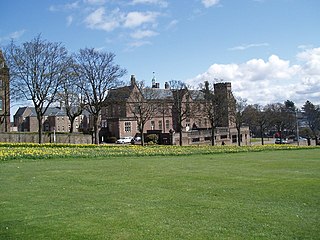
Dundee Royal Infirmary, often shortened to DRI, was a major teaching hospital in Dundee, Scotland. Until the opening of Ninewells Hospital in 1974, Dundee Royal Infirmary was Dundee's main hospital. It was closed in 1998, after 200 years of operation.

Sir Alexander Gillies was a New Zealand orthopaedic surgeon who played a major role in establishing orthopaedics as a surgical speciality in New Zealand. One of the first to practise hip replacement in New Zealand, he was prominent in the foundation of the New Zealand Orthopaedic Association and became its first president. He was associated with a number of humanitarian causes including the New Zealand Red Cross Society of which he was chairman and latterly president.

Maryfield Hospital was a hospital in Stobswell, Dundee, Scotland. Originally a poorhouse hospital it became Dundee's second main hospital after Dundee Royal Infirmary. It closed in the 1970s following the opening of Ninewells Hospital.
J. Michael Henderson is an American general and transplant surgeon, with experience in portal hypertension, liver transplantation, and pancreatic disease. Henderson is the Chief Medical Officer at the University of Mississippi Medical Center since 2015. Prior to this role, he was with the Cleveland Clinic from 1992–2014. He was the Chairman of the Department of General Surgery and Director of the Transplant Center for 12 years, and was the Chief Quality Officer for the Cleveland Clinic’s 10-hospital system for eight years.

Lancelot Edward Barrington-Ward KCVO, FRCS, FRCSEd was a British surgeon who won four rugby union international caps for England shortly after graduating in medicine at the University of Edinburgh. He worked as a paediatric surgeon at the Hospital for Sick Children, Great Ormond Street, London, and as a general surgeon at the Royal Northern Hospital, London. He was appointed surgeon to the Royal Household by King George VI and was made a Knight Commander of the Royal Victorian Order (KCVO) in 1935.
Douglas Archibald Hamilton Ritchie was a Rhodesian dentist and politician. Born in the Colony of Jamaica to British parents, his family moved to the United Kingdom in his youth. After serving in the Royal Air Force during World War II, he moved to Southern Rhodesia and practised dentistry. He soon became one of the leading dentists in Rhodesia, and was elected to the Medical Council of Rhodesia in 1958. He entered politics in the 1960s, joining Rhodesian Front and representing the Salisbury suburb of Borrowdale as a member of parliament from 1965 to 1979. In the years following Zimbabwe's independence and the demise of Rhodesia, he emigrated to South Africa and engaged in general practice, dying there in 1999.

Charles Walker Cathcart, CBE, MB CM, FRCSEd, FRCSE was a Scottish surgeon who worked for most of his career at the Royal Infirmary of Edinburgh (RIE). As a young man he had represented Scotland at rugby on three occasions. During the First World War he jointly published an account of the value of sphagnum moss as a wound dressing which led to its widespread use by the British Army for that purpose.
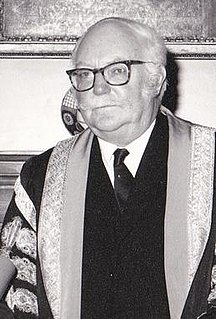
James Alexander Ross MBE, FRCSEd was a Scottish surgeon awarded the MBE for his service in the Second World War. He was a leading member of the surgical team which, in 1960, carried out the first successful kidney transplant in the United Kingdom. He served as President of the Royal College of Surgeons of Edinburgh.

The Royal Dundee Liff Hospital, previously known as Dundee Lunatic Asylum and Dundee Royal Lunatic Asylum, was a mental health facility originally established in 1812 in Dundee, Scotland. It was originally located in premises in Albert Street Dundee, but later moved out of the town to new buildings in the nearby parish of Liff and Benvie. Buildings at Liff included Greystanes House, which was the main building, and, Gowrie House, which was the private patients' facility. Both Grade B listed buildings.

Isabella Forshall FRCSE was an English paediatric surgeon who played a leading role in the development of the speciality of paediatric surgery in the United Kingdom. She took a particular interest in neonatal surgery and was instrumental in the establishment of the Liverpool Neonatal Surgical Unit, the first neonatal intensive care unit in the UK and indeed in the world.

Sir James David Fraser, 2nd Baronet, FRCS, FRCSEd was a Scottish academic surgeon and a foundation professor at the medical school of Southampton, England, when it was established in 1969. He subsequently became Postgraduate Dean at the University of Edinburgh and served as President of the Royal College of Surgeons of Edinburgh from 1982 to 1985.
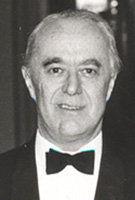
James Johnston Mason Brown OBE, FRCSEd was a Scottish paediatric surgeon. During World War II he served as a surgical specialist with the 8th Army in North Africa and Italy and was awarded the OBE for this service. As surgeon-in-chief at the Royal Hospital for Sick Children in Edinburgh, he edited the major textbook The Surgery of Childhood. He was the joint founder of the Scottish Surgical Paediatric Society and a founder member of the British Association of Paediatric Surgeons (BAPS), of which he became president. He was elected President of the Royal College of Surgeons of Edinburgh (RCSEd) in 1962 but died in office aged 56 years.

Sir Thomas Frederick Chavasse, MD, FRCSEd, FRCSEng was an English surgeon, who learned the practice of antiseptic surgery from Joseph Lister in Edinburgh and remained an exponent of this technique throughout his career. As a surgeon at the Birmingham General Hospital he was influential in the design of the new hospital in 1897 and was an active fundraiser for the project. An active supporter of the British Red Cross Society and the St John's Ambulance Brigade, he was knighted in 1905.
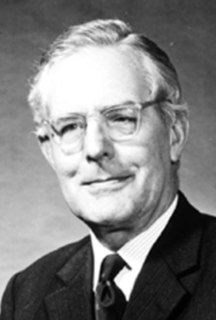
Sir Donald Macleod Douglas, was a Scottish academic surgeon. His schooling and medical undergraduate education were at St Andrews following which he embarked at an early stage on an academic career, winning a scholarship to pursue research at the Mayo Clinic, Minnesota. After further research at the Royal Postgraduate Medical School in London he served in World War II as a surgical specialist with the Eighth Army in North Africa and was seconded from military duties to serve as Professor of Surgery in Baghdad. As professor of Surgery in St Andrews and Dundee, he developed research interests in wound healing and the design of operating theatres. He was president of the Association of Surgeons of Great Britain and Ireland and of the Royal College of Surgeons of Edinburgh and was knighted in 1972.
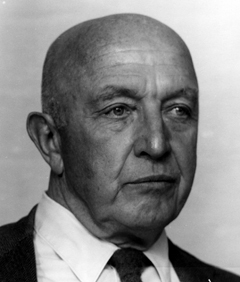
Ian Scott Smillie OBE, FRCSEd was a British professor of orthopaedic surgery who became an international authority on conditions of the knee. He devised techniques and instruments to facilitate the surgical excision of the damaged knee meniscus. He was an early advocate of specialist team care in orthopaedics and of early mobilisation. His textbooks Injuries of the knee joint and Diseases of the knee Joint were widely read throughout the world. In 1981 he was elected president of the International Society of the Knee.

Shotley Bridge Hospital is a healthcare facility in Shotley Bridge, County Durham, England. It is managed by the County Durham and Darlington NHS Foundation Trust.
Guan Bee Ong OBE, PSM, DSc was a Hong Kong academic surgeon who was professor of surgery at the University of Hong Kong. Born in Raj of Sarawak, he acquired a reputation as a skilled and innovative surgeon in British Hong Kong, who encouraged original research among surgical trainees. Originally a general surgeon whose practice included cardiac and neurosurgery, under his leadership surgical specialities and subspecialties were developed in Hong Kong.

















